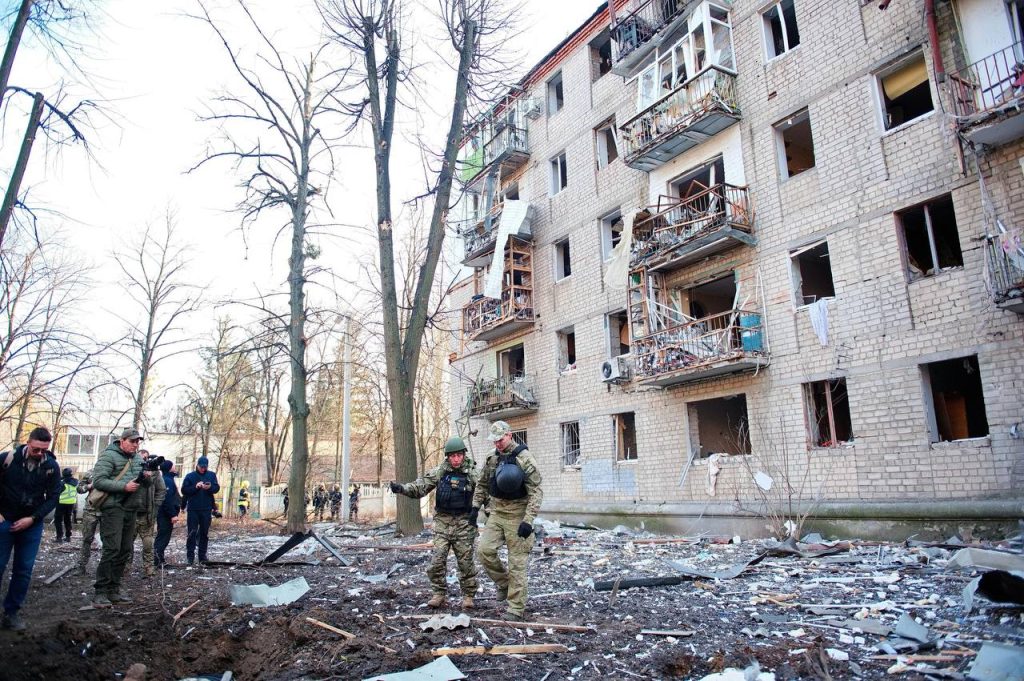Russian troops recently attacked Kharkiv, Ukraine’s second-largest city, with a glide air bomb, killing a man and injuring 19 people, including children. This attack marked the first time since 2022 that Russian troops used this new type of munition. Kharkiv has been struck around ten times within the last month, causing severe damage to civilian infrastructure and an increase in casualties. President Zelensky has called on the West to provide more air defense systems to Ukraine, but experts believe that the proximity of the border makes these systems inefficient against ground-based attacks. To create a “safe zone” in Kharkiv Oblast, Russian troops must be pushed away at least 80-100 kilometers.
Russia intensified its attacks on Ukraine’s critical infrastructure between March 21-25, targeting energy infrastructure to demoralize civilians. A significant attack occurred on Kharkiv, where Russian troops destroyed or damaged the local thermal power plant and electrical substations, causing a severe power outage in the city. This disruption also affected water and heating supplies, as well as electric transport. The goal of these attacks is not just to target the energy infrastructure but also to weaken Ukraine’s air defense systems and military capabilities. The destruction of energy infrastructure could impact the activities of the military, especially considering the highly digitized structure of the Ukrainian Armed Forces.
Despite reports of Russia’s preparations for a new offensive against Kharkiv, Ukraine’s Center for Countering Disinformation believes that Moscow currently lacks the resources for such an operation. Experts note that Russian losses in previous offensives in Avdiivka and Bakhmut were smaller compared to Kharkiv, making a large-scale assault on the city unlikely at the moment. However, there are indications that Russia may attempt a new offensive in Kharkiv in the next few months, taking advantage of the lack of ammunition and manpower in Ukrainian forces. While Russian troops may have the numbers to mount a new offensive, the success of such an operation remains uncertain due to Ukrainian defenses being strengthened.
Some experts remain skeptical about Russia’s immediate plans to seize Kharkiv again, suggesting that Moscow may focus on other areas for the time being. The possibility of a new offensive in the Kupiansk sector of the front line is uncertain, with speculations about potential assaults near villages in Donetsk Oblast. Russian forces might be preparing for a summer offensive in different directions, with movements hinting at possible targets in Donetsk Oblast. As the situation in Kharkiv remains tense, the unpredictability of Russian actions and Ukraine’s defensive strategies continue to shape the course of the conflict.
In conclusion, the ongoing attacks on Kharkiv by Russian troops have resulted in significant casualties and damage to civilian infrastructure, posing challenges for Ukraine’s defense capabilities. The targeting of energy infrastructure and critical facilities aims to demoralize civilians and weaken Ukraine’s military operations. While reports of a potential new offensive in Kharkiv raise concerns, experts have differing opinions on the feasibility of such an operation at this time. As the conflict evolves, the security and stability of Kharkiv and other regions remain uncertain, requiring continued vigilance and strategic planning to defend against further Russian aggression.


